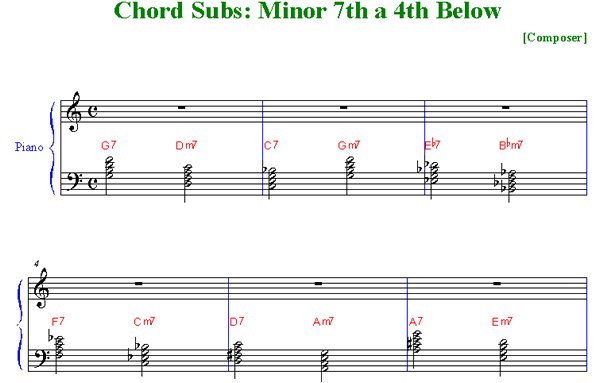How To Create Unlimited Original Chord Progressions Using Chord Substitutions
 Technique
#2: The "m7 down a 4th for 7th" Chord Substitution
Technique
#2: The "m7 down a 4th for 7th" Chord Substitution
The "m7 down a 4th for 7th" technique is another of the best ways to create a fresh harmonization of a familiar melody.
Here's the deal:
For any 7th chord,
substitute a minor 7th chord a perfect 4th lower,
if the melody will tolerate it.
For example, the 2nd chord in Silent Night (if we play it in the key of C) is the G7 chord. So we simply go down a perfect 4th from G -- which is D -- and we build a minor 7th chord. The melody at that point is "D", so there's no conflict between the melody and the chord. So it works. After playing Dm7, we can go back to G7. We have just made the song more interesting.
If you're not sure what chord is a perfect 4th below a 7th, here's a chord substitution chart that will help you. You might want to print it out and keep it on your music rack on your piano:
| 7thChord: | C7 | F7 | G7 | D7 | A7 | E7 | B7 | Db7 | Eb7 | Ab7 | Gb7 | Bb7 |
|---|---|---|---|---|---|---|---|---|---|---|---|---|
| m7chord sub: | Gm7 | Cm7 | Dm7 | Am7 | Em7 | Bm7 | F#m7 | Abm7 | Bbm7 | Ebm7 | Dbm7 | Fm7 |
So:

Get the idea?

